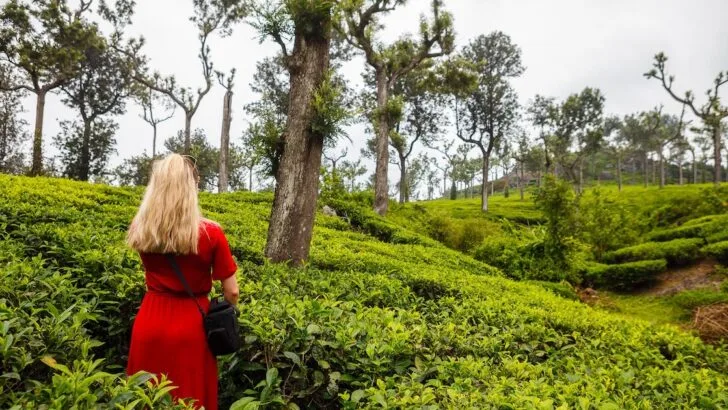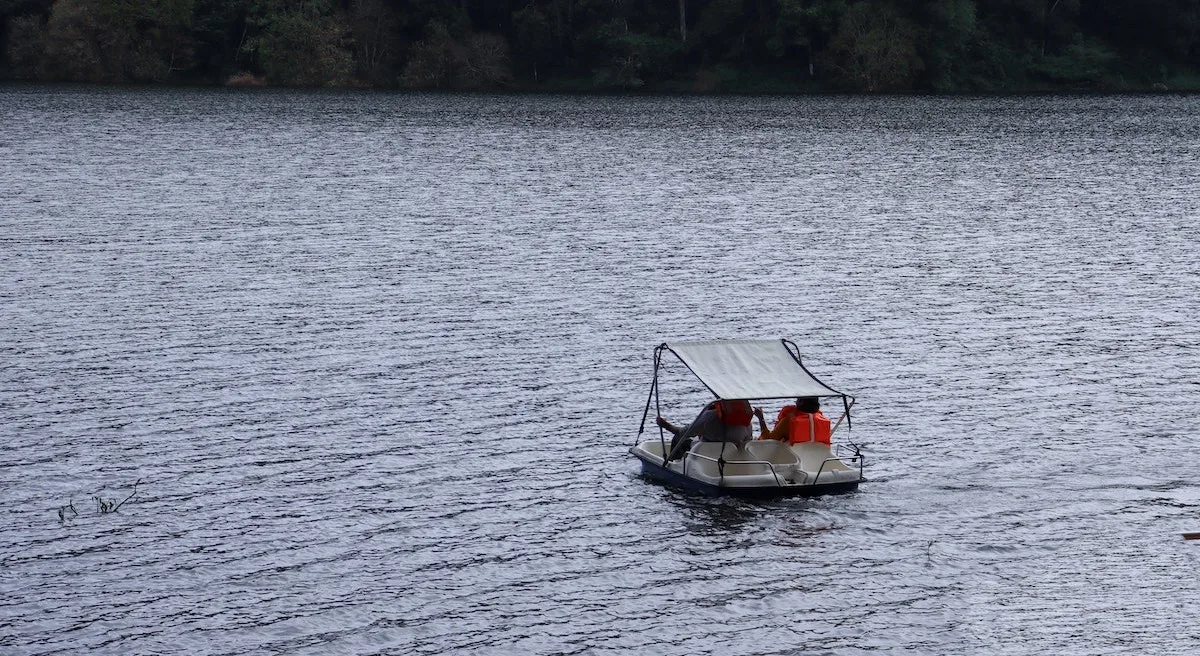Planning your Munnar itinerary? I’ll assume that, just like me, you’ve been drawn to this green region by pictures of the sprawling tea plantations, spindly silver oaks and the misty Western Ghats mountain range.
This hill station in central Kerala is worth all of the hype it gets.
As one of the largest tea-growing regions in India, some of the best things to do in Munnar include tea plantation treks, tea tasting and factory tours.
There are so many places to visit in Munnar too, from hiking trails and zipwires to a performing arts centre with daily Kathakali performances.
In the following blog post, I’ll tell you a little about what I did on my Munnar itinerary, as well as the best places for tea treks, where to stay and how to get off the beaten track.
You may also want to check out my detailed Kerala itinerary for tips on getting around Kerala, the best places to visit and must-try activities.
Disclosure: This post includes affiliate links. If you decide to click through and make a qualifying purchase, I will receive a small commission at no extra cost to you – thanks for your support.
I created this post following a sponsored trip hosted by Kerala Tourism. They covered my hotel and travel costs and gave me many helpful pointers. I then continued my Kerala trip solo – all of the advice in this post is my own, so I hope you find it useful!
QUICK INFORMATION
Best time to visit: September to March
How to get there: Bus or private transfer
Must-Do Activities in Munnar
2. Lockhart Tea Museum tasting and factory tour ☕︎
3. Hiking (half-day or full-day in Lakshmi Hills) 🥾
Short on time? ⏰ Take a Munnar day trip from Kochi
What is Munnar Famous For?
Munnar is famous for its lush, green tea plantations.
The first tea plantation was founded in Munnar in the late 1800s after the British noticed that the cooler climate at the hill station was ideal for growing tea.
Fast forward to the present day, and the hillsides are carpeted in tea bushes and tall silver oaks used in the tea production process.
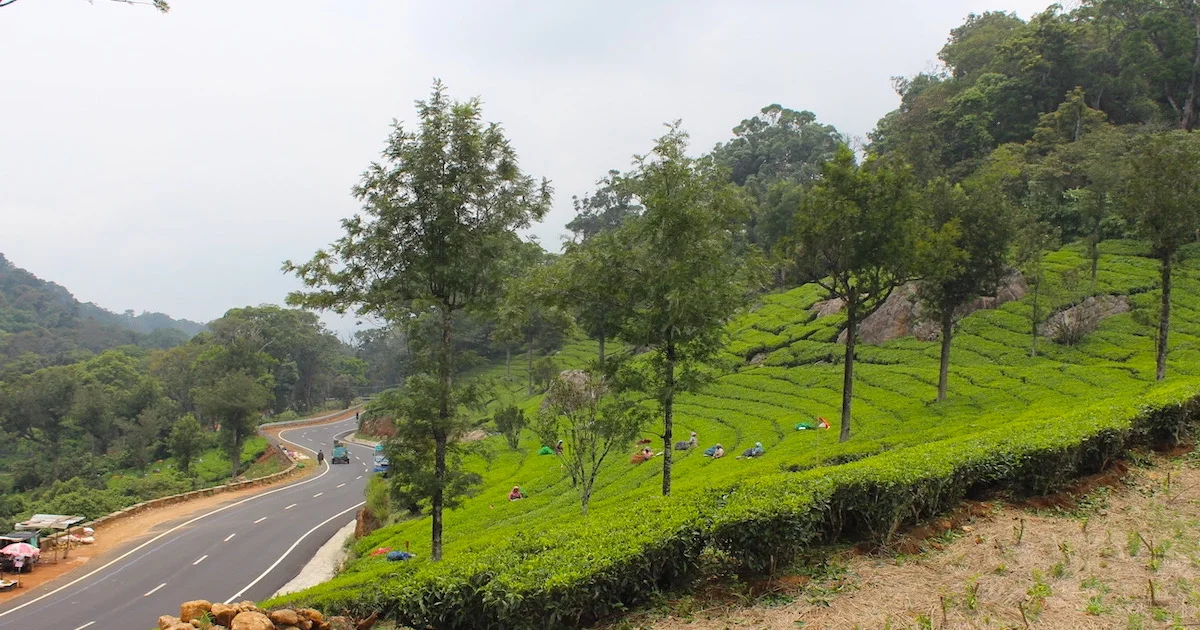
As Munnar is 1500 to 2500 metres above sea level, it Munnar is a nice refuge from Kerala’s sometimes intense heat.
The cooler climate and scenery make Munnar great for hiking and other outdoor activities such as wildlife watching. There are many waterfalls, mountains and dams in the area.
To summarise, Munnar is best known for:
- Tea plantations and tea factories
- Scenic mountain roads
- A cooler climate
- Mountains and nature reserves
- Wildlife such as Nilgiri tahr, elephants, and tigers
- Outdoor activities
When to Visit Munnar
The best time to visit Munnar is from September to March.
Winter (October to February) is particularly popular because it’s cooler: the average temperature stands around 22°C.
If you’re keen to include plenty of hiking or tea trekking into your Munnar itinerary, then October to February is the best time to visit.
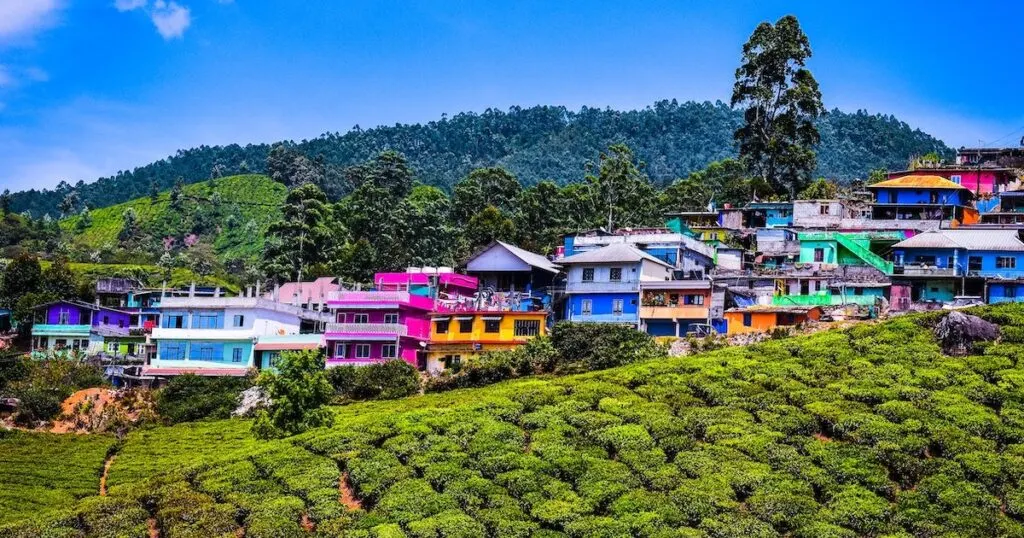
As soon as April hits, the temperature begins to climb again.
It’s best to avoid Munnar from July to August, the monsoon season, as this time brings heavy rains to the region. Many activities and tours are cancelled at short notice during heavy rain.
How to Get to Munnar
Getting to Munnar is the tricky part. First, you need to fly to Cochin International Airport; I recommend that you check flight deals on Skyscanner several months in advance.
Then, it is a four- to five-hour drive from Kochi to Munnar.
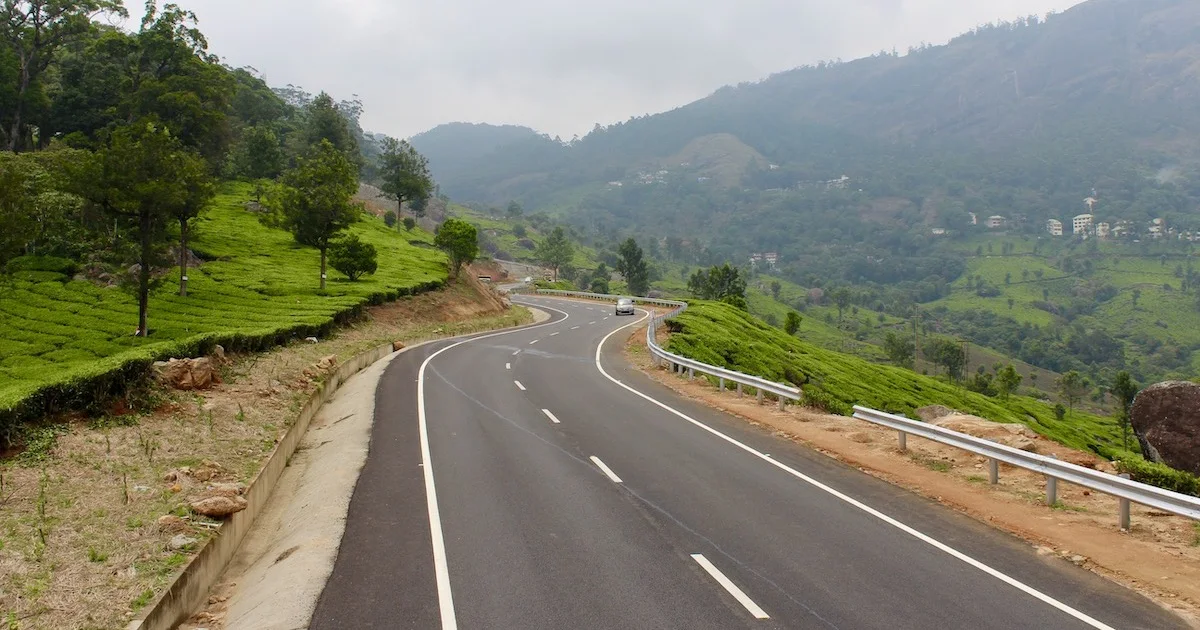
You can take a local bus to Munnar. However, once you arrive at the bus station, you need to arrange a taxi to your hotel anyway.
The local bus is cheap. However, it’s notorious for being uncomfortable and sometimes unreliable.
On 12Go, you can also book a private Kochi to Munnar transfer. Otherwise, you can coordinate a transfer directly with your hotel.
It’s also complicated to explore Munnar by public transport.
The attractions are spread across a wide area in Munnar, so you will usually need to rely on tours and taxis if you don’t have your own vehicle.
Flights! ✈️
Here’s why I use Skyscanner…
Finding a good deal on flights can often cut the cost of your trip in half. I use the ‘Whole Month‘ and ‘Price Alerts‘ tools to compare prices across different dates.
Where to Stay in Munnar
The Best Things to Do and Places to Visit in Munnar
1. Go trekking at a tea plantation in the Lakshmi Hills
Munnar has over 50 tea plantations. However, most people will agree that the most scenic area is the Lakshmi Hills.
The Laxmi Tea Estate overlooks the Lakshmi Hills, making it one of the nicest places for a tea plantation trek and an epic photograph.
If you’re lucky, you may also spot local birds, insects and other wildlife.
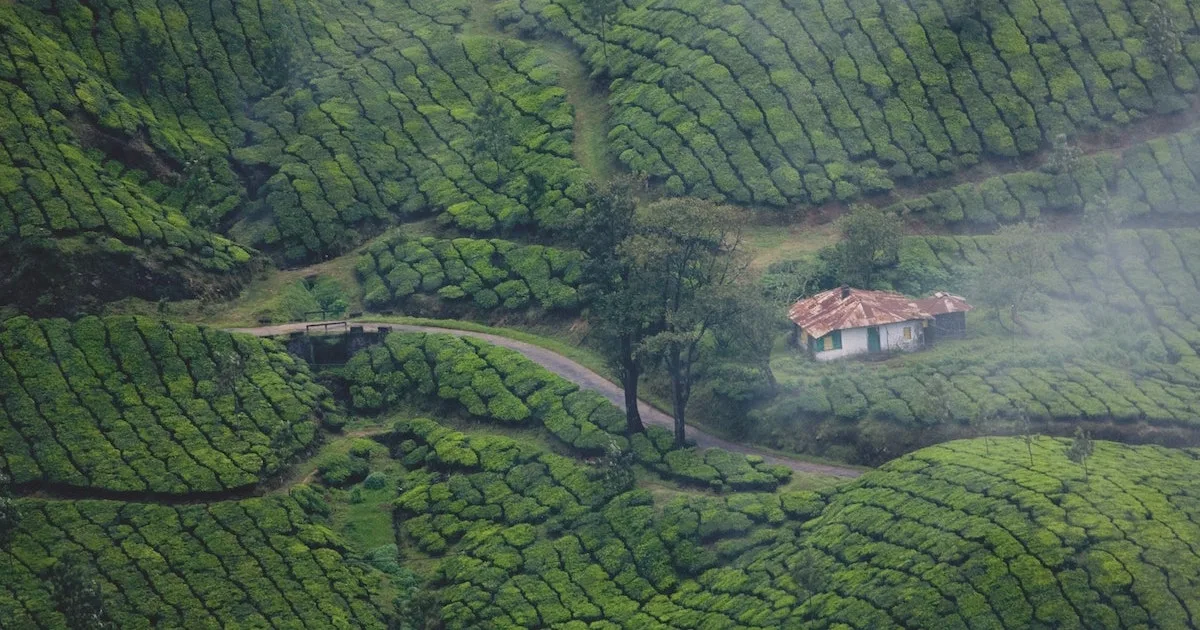
A tea trek is also a good time to learn more about the different types of tea grown in Munnar.
You can also hear about the tea pickers’ working conditions and lifestyle.
Conveniently, you can check the availability for a Lakshmi Tea Estate trek online.
2. Visit the Lockhart Tea Museum for a factory tour and tea tasting
Tea tasting is a must on your Munnar itinerary. For this, I recommend the stunning Lockhart Tea Museum, a factory on the historic Lockhart Estate.
The Lockhart Estate was first established in 1936, making it one of the earliest plantations in Munnar.
The factory also produces around 20 million kilograms of tea every year.
In the Lockhart Tea Museum, you can also see the machines they have used over the years.
Again, you can easily check the availability for the Lockhart Tea Museum tasting and factory tour online.
3. Experience Kathakali at Punarjani Traditional Village
When you’re ready for a break from tea, there are daily Kathakali performances at the Punarjani Traditional Village in Munnar.
Kathakali is a traditional art form that originated in Kerala. The performers play out stories from Hindu epics using dance, mime and other techniques such as eye dancing.
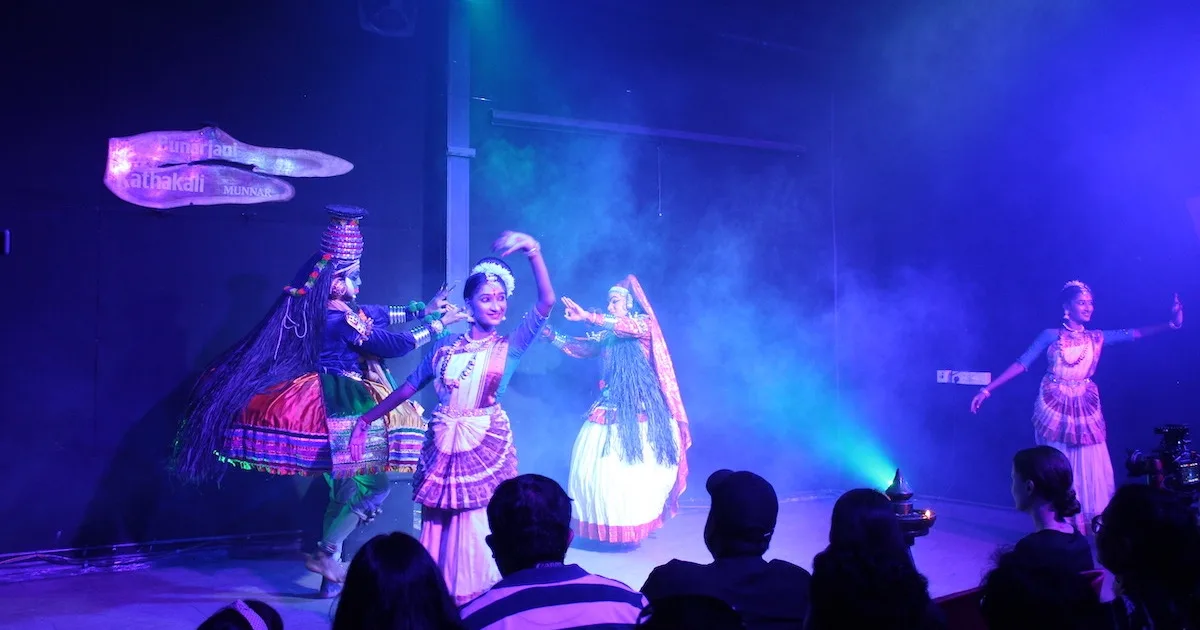
This tradition has carried stories from generation to generation.
Watching Kathakali was one of my favourite moments in Munnar. You can tell just how much work goes into practising this art form, and how important it is to the performers to keep the tradition alive.
The village also organises Kalaripayattu performances. Kalaripayattu is a traditional martial art form where fighters use combat weapons such as staffs, knives and swords.
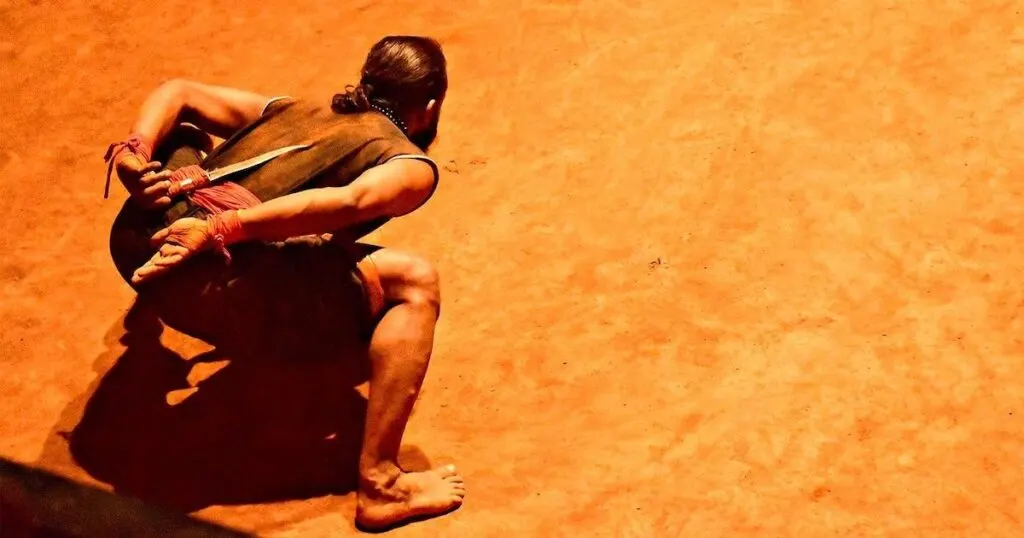
You can buy tickets on the door or book in advance on their website.
Most of the performances take place in the evening, making them an easy add-on to a day at a tea plantation.
4. Visit Eravikulam National Park to see Nilgiri tahr
Eravikulam National Park is one of your best chances at spotting Nilgiri tahr, a mountain goat indigenous to the mountains in south India. They have two curled, pointed horns.
The national park is a short drive away from the main part of Munnar.
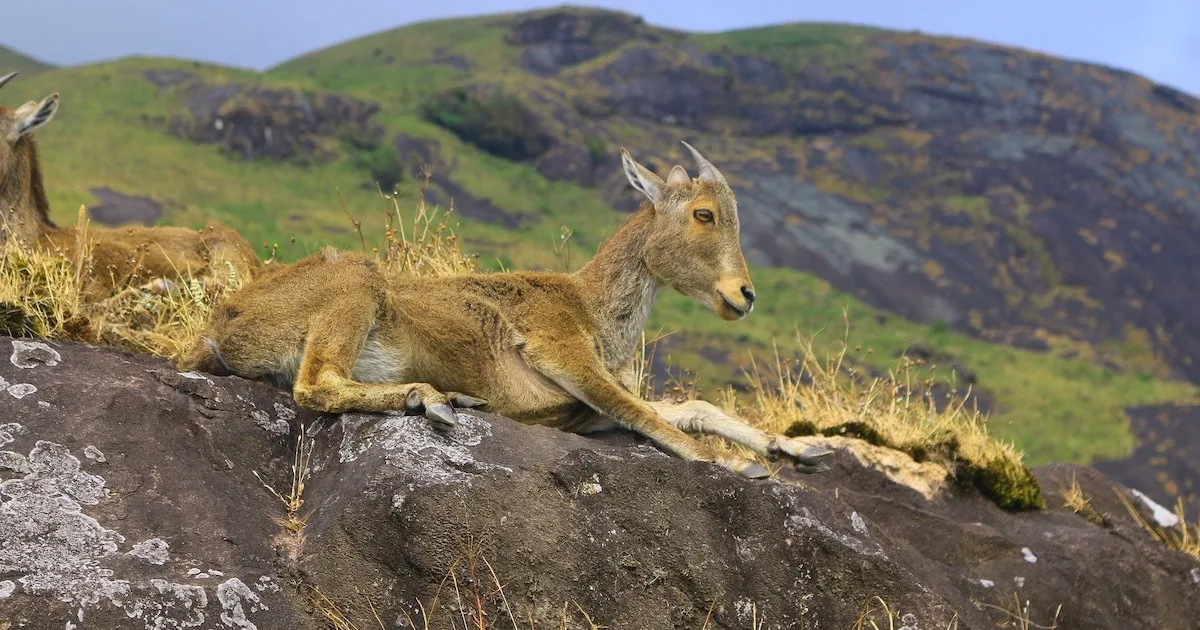
Handily, you can book a safari ticket directly on the Eravikulam National Park website.
I also found this two-day Munnar tour that includes a visit to Eravikulam National Park, Mattupetty Dam, Echo Point, a tea museum and the Raga Theatre (for Kathakali performances).
5. Explore Mattupetty Dam and local waterfalls
I’m all for activities that will take you off the beaten track. For this, I recommend visiting Mattupetty Dam, a popular spot where locals go to rent kayaks and paddleboats.
At Mattupetty Dam, you can reach Echo Point, a popular viewpoint over the dam.
Check the availability for a Mattupetty Dam tour.
Munnar also has some incredible waterfalls, which are again popular with locals.
The Attukad Waterfalls are surrounded by dense jungle and hiking trails.
5. Take a day trip to Periyar Lake
You can also consider taking a day trip to Periyar Lake, which is further from Munnar (a two- to three-hour drive away). This spot is famous for its bamboo rafting.
For centuries, bamboo rafts have been used by Kerala tribespeople to cross rivers. At the lake, you can weave your own raft from bamboo poles, coir ropes and inflated rubber tyres.
Not only does this provide an insight into the artisanship behind building a raft, but there’s also an exhilarating four-kilometre trek through the jungle to get to the launch point.
If you stand in the shallows long enough, expect to have your feet nibbled by harmless red garra fish – a free pedicure before you board the raft and navigate using a bamboo stake.
You can book the bamboo rafting on the Periyar Tiger Reserve website, but if you’re headed to Thekkady next, it’s closer to Thekkady than Munnar.
7. Take the sunrise Top Station trek
Top Station used to be home to the highest railway station on the Kundala Valley line. However, nowadays, there’s little evidence of such a thing.
Top Station is incredible for trekking, so I’ve heard. There are views of the Western Ghats and miles of tea bushes.
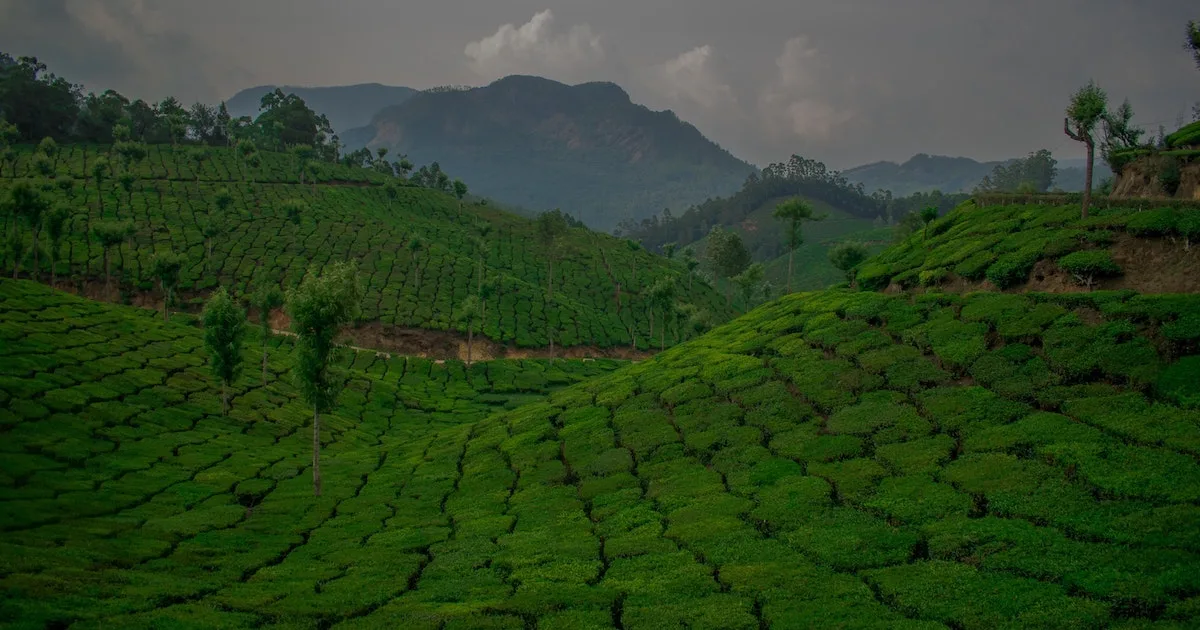
Many people take a sunrise tour, which includes camping overnight. A benefit of seeing the sunrise is that it’s slightly less crowded than during the daytime.
However, this is a very popular activity among locals, so don’t expect to be alone.
8. Try parotta and egg curry
Munnar is famous for parotta and egg curry. Flaky and crispy, the flatbread is made up of a series of thin layers that crumble to the touch, similar to pastry.
Traditionally, the Munnar version of parotta is pan-fried with a mix of maida flour (Kerala-style wheat flour), oil, ghee, water, and egg.
In Northern India, it is usually served with a meaty stew. However, the roadside stalls in Munnar serve parotta with egg curry.
If you can’t find any, Sree Annapoorani Pure Veg has parotta on their menu.
Munnar Itinerary for 1 – 4 Days
Munnar 1-Day Itinerary
If you only have one day to spend in Munnar, you will probably want to prioritise taking a tea plantation trek or tour.
Which one you choose depends on whether you’re more interested in the scenery or the tea-growing process.
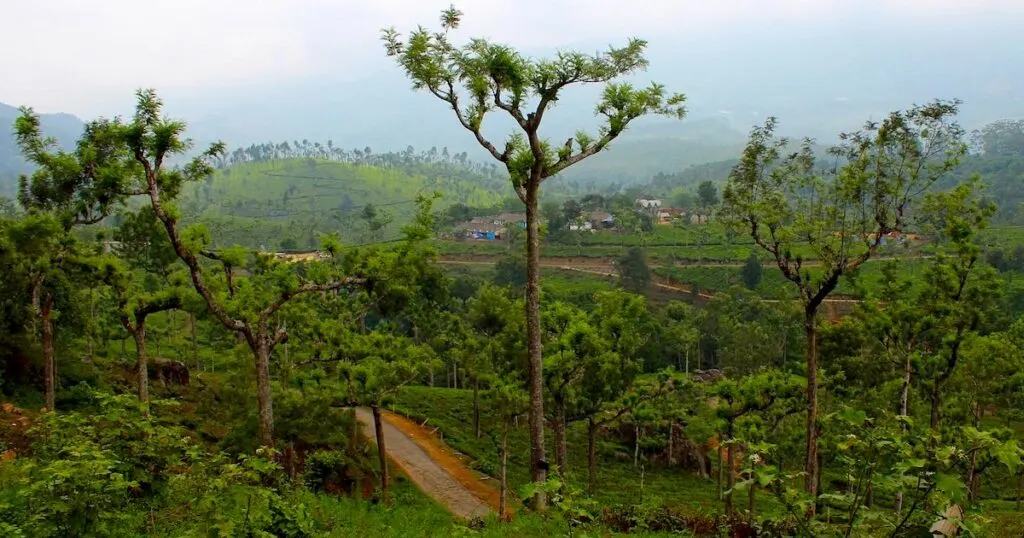
For the former, and to see the tea pickers in action, I’d take the Lakshmi Tea Estate trek as it’s set in the scenic Lakshmi Hills.
For the latter, I’d take the Lockhart Tea Museum tasting and factory tour to learn more about the steps in the tea cultivation process.
After the tour, you still have time to watch a Kathakali performance at Punarjani Traditional Village in the evening.
If you can hunt down parotta and egg curry for dinner, bonus points.
Munnar 2-Day Itinerary
With two days in Munnar, you have time to visit a tea plantation and get stuck into an additional activity – unless you want to spend both days at tea plantations.
If you want to spend the second day hiking, then you might want to choose the tea museum tour over a tea estate trek because you’ll be doing plenty of walking the following day.
- Day 1: Take the Lockhart Tea Museum tasting and factory tour. Watch Kathakali at Punarjani Traditional Village in the evening.
- Day 2: Spend a half day or full day hiking in Lakshmi Hills.
- Day 2 alternative: Visit Eravikulam National Park for wildlife watching or go boating at Mattupetty Dam.
Munnar 4-Day Itinerary
Four days is a great amount of time to spend in Munnar.
You have plenty of time to fully explore the region, including treks, tea tastings and boating.
- Day 1: Take the Lockhart Tea Museum tasting and factory tour. Watch Kathakali at Punarjani Traditional Village in the evening.
- Day 2: Spend a half day or full day hiking in Lakshmi Hills.
- Day 3: Visit Eravikulam National Park to spot Nilgiri tahr.
- Day 4: Experience the sunrise at Top Station, then visit Mattupetty Dam.
I hope you found my Munnar itinerary useful! If you’re exploring Kerala, feel free to continue reading…
Suggested reading:
- Kerala itinerary – start here to plan your trip!
- What to wear in Kerala + a free packing list
- Central Kerala itineraries:
- Alleppey itinerary (including backwater cruise advice)
- Thekkady itinerary + the Periyar Tiger Reserve!
- Kochi itinerary (Cochin guide)
FAQs
While the hill stations of Ooty and Munnar are deserving of an individual trip, Ooty has a cooler climate and higher elevation than Munnar. Both destinations are popular for their wildlife, lakes, waterfalls, and outdoor activities. Munnar is best known for its tea plantations, while Ooty is known for its scenic steam railway line.
Munnar is famous for its tea plantations, wildlife, nature reserves, lakes, outdoor activities, and wildlife such as Nilgiri tahr, elephants and tigers.
Ideally, you should spend at least two days in Munnar. The ideal amount of time to spend in the Munnar region is between two days and five days.

